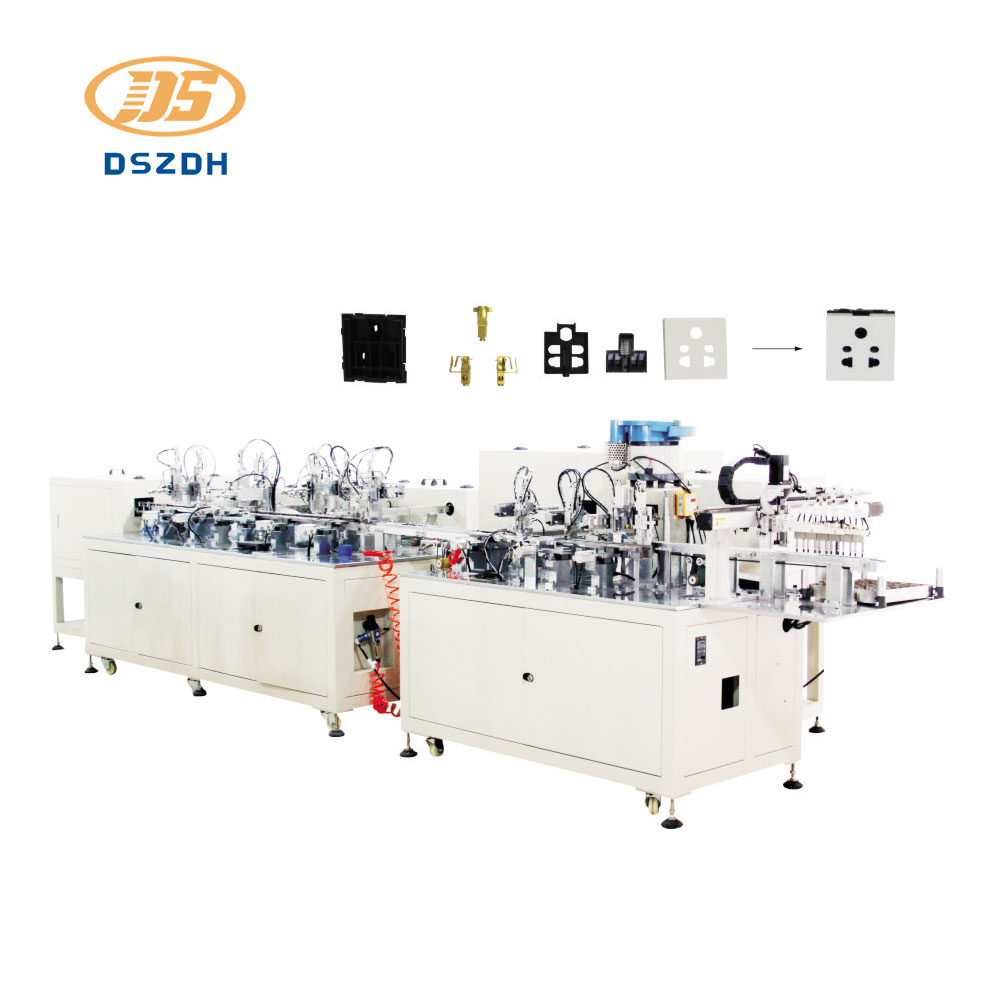Overcoming Obstacles: Addressing Common Challenges in Three Hole Socket Automatic Assembly Machine Operations
2024-04-03
In the realm of manufacturing, precision and efficiency are paramount. Three Hole Socket Automatic Assembly Machines have revolutionized the assembly process, offering unparalleled speed, accuracy, and reliability. However, like any sophisticated piece of machinery, these automated systems are not immune to challenges. Let's explore some common hurdles faced in the operation of Three Hole Socket Automatic Assembly Machines and how manufacturers address them to ensure seamless production.
1. Component Variability:
- Challenge: Variability in component dimensions or quality can pose challenges during assembly, leading to misalignments or assembly errors.
- Solution: Manufacturers implement robust quality control measures to inspect and verify components before assembly. Additionally, adaptive programming allows machines to adjust assembly parameters dynamically to accommodate variations in component specifications.
2. Equipment Downtime:
- Challenge: Equipment breakdowns or malfunctions can result in unplanned downtime, disrupting production schedules and impacting productivity.
- Solution: Predictive maintenance techniques, such as condition monitoring and equipment health tracking, enable operators to anticipate potential failures and address issues proactively before they escalate. Regular preventive maintenance schedules also help minimize downtime by identifying and resolving issues before they cause disruptions.
3. Programming Complexity:
- Challenge: Programming and configuring the Three Hole Socket Automatic Assembly Machine to meet specific production requirements can be complex and time-consuming.
- Solution: Manufacturers provide user-friendly programming interfaces and intuitive software tools that simplify the programming process. Training programs and technical support resources are also available to help operators develop the necessary skills to program and operate the machine effectively.
4. Integration Challenges:
- Challenge: Integrating the Three Hole Socket Automatic Assembly Machine with existing manufacturing systems, such as robotic arms or quality control equipment, can present integration challenges.
- Solution: Manufacturers design machines with flexible interfaces and communication protocols that facilitate seamless integration with other systems. Compatibility with industry-standard communication protocols, such as Ethernet/IP or Modbus, ensures interoperability with a wide range of equipment.
5. Quality Control Issues:
- Challenge: Ensuring consistent quality and reliability of assembled products can be challenging, especially when dealing with complex assemblies or stringent quality standards.
- Solution: Advanced sensors, vision systems, and quality control algorithms are integrated into Three Hole Socket Automatic Assembly Machines to monitor and inspect products in real-time. Automated testing and inspection routines verify product quality throughout the assembly process, ensuring adherence to quality standards and specifications.
6. Operator Training and Skills:
- Challenge: Operating and maintaining Three Hole Socket Automatic Assembly Machines requires specialized training and skills that may not be readily available.
- Solution: Manufacturers offer comprehensive training programs and technical support services to ensure operators have the knowledge and skills required to operate and maintain the machines effectively. Hands-on training sessions, instructional materials, and online resources are provided to help operators become proficient in machine operation and troubleshooting.
7. Cost Considerations:
- Challenge: Investing in Three Hole Socket Automatic Assembly Machines involves significant upfront costs, which may be prohibitive for some manufacturers.
- Solution: Manufacturers offer flexible financing options and leasing arrangements to make the initial investment more manageable. Additionally, the long-term benefits of increased productivity, reduced labor costs, and improved product quality often outweigh the initial investment, making Three Hole Socket Automatic Assembly Machines a cost-effective solution in the long run.
In conclusion, while Three Hole Socket Automatic Assembly Machines offer unparalleled efficiency and precision in manufacturing, they are not without their challenges. By implementing robust quality control measures, predictive maintenance strategies, user-friendly programming interfaces, seamless integration capabilities, and comprehensive operator training programs, manufacturers can address common challenges and maximize the performance and reliability of these automated systems. As technology continues to advance, manufacturers will continue to innovate and refine Three Hole Socket Automatic Assembly Machines to overcome new challenges and meet the evolving needs of the manufacturing industry.



